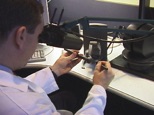Medical Visualization

Our focus on medical visualization is on real time volume rendering of 3D medical imaging data. We have also collaborated with Ohio Supercomputer Center on the NIH funded temporal bone dissection project. Two key issues for successfully applying volume rendering techniques to medical applications are real time rendering performance and visual realism in the rendered images. There is also a need to have an optimal display of pre-segmented data with sufficient contextual information. Finally, as high resolution medical scanning devices become increasingly accessible, there is a pressing need to develop interactive rendering and analysis tools that can handle large scale 3D and 4D medical data.
More information on GRAVITY member Thomas Kerwin’s web site
Publications on Medical Visualization




A YouTube movie on the temporal bone surgical simulator